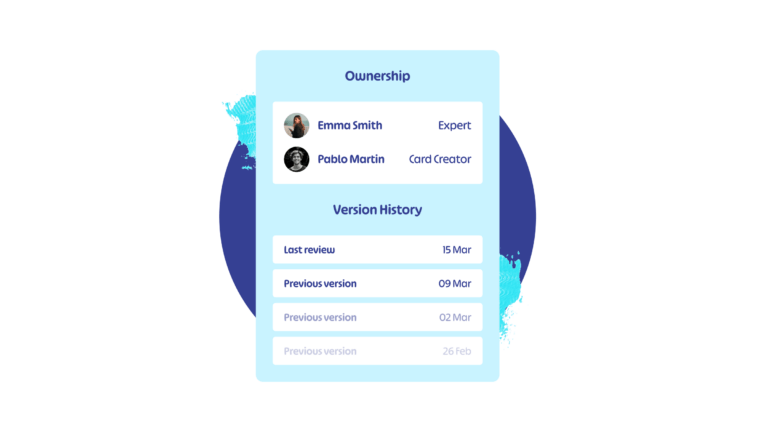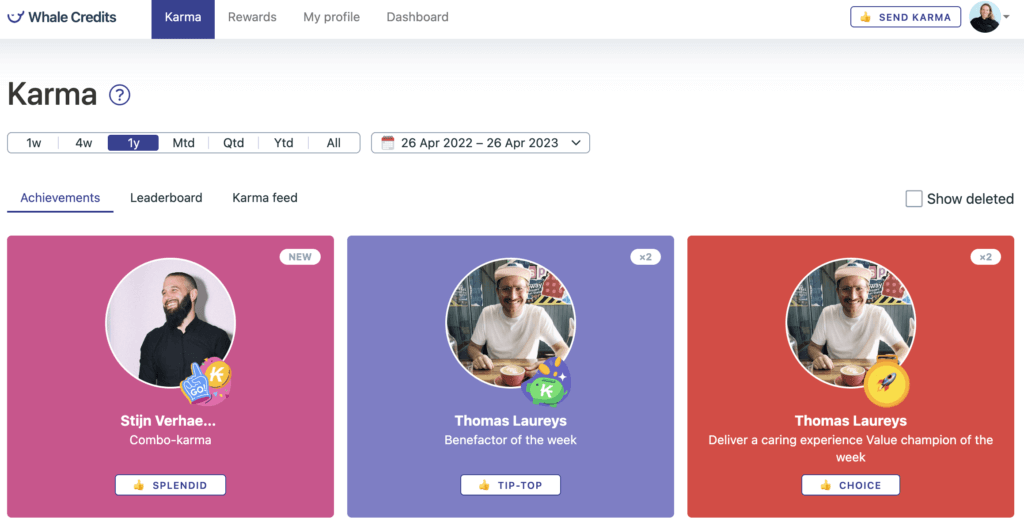“Create a Learning Culture in your workplace.” You’ve heard the instruction in articles if not the world’s most followed social media posts.
“Build a safe space to learn,” they profess, but is it that easy? Is it simply a matter of implementing training sessions in your business? If it were that easy, there wouldn’t be 4,300 people on LinkedIn talking about building a culture of learning, we’d have solved the issue already.
Many organizations aim to spend time creating learning culture, but only 36% believe they have successfully done so, according to the CIPD’s Professionalising Learning and Development report. Before we focus on why this happens and how to avoid it, let’s consider what happens at those 36% of successful organizations.
Research from Bersin by Deloitte demonstrated that companies that build a learning culture in the workplace are:
- 92% more likely to innovate
- 46% more likely to be the first to market
- 17% more likely to be the market share leader
- 34% faster at responding to customer needs
- 26% better at delivering quality products
- 37% better employee productivity
- 58% more prepared to meet the demands of the future
Creating a learning culture is no longer a nice to have for your team members. It’s key to recognize the importance of learning culture to unlock growth.
What is a learning culture?
A learning culture in the workplace refers to an organizational environment or mindset that promotes and values continuous learning and development among the team. When creating a learning culture, individuals are encouraged to seek out new knowledge, skills, and experiences, while the organization supports and facilitates these endeavors.
How do companies implement a learning culture in their workplace that genuinely fuels employee growth? The ones that succeed, reiterate the culture and demonstrate learning support constantly, over a long period. Those teams know that doing so increases their ability and likelihood to grow, adapt, and succeed. So, how do you build a learning culture?
12 steps to building an exceptional learning culture in the workplace
The question is HOW to build a learning culture? As with most things in business, it’s all about designing the right process.
When Kendra Grant’s team was charged with designing and delivering learning experiences for 90,000 Walmart Canada associates, she knew as a senior learning-and-design director that the landscape of corporate learning needs was constantly changing. Grant, now the principal of her own L&D practice, saiys
1. Align learning with company goals
When every training initiative is seamlessly intertwined with your company’s strategic objectives, it drives progress with less nudging and perceived nagging from HR. For instance, if your goal is to expand into new markets, developing learning that equips your workforce with intercultural skills to navigate those markets successfully will be lapped up by proactive employees—with minimal arm twisting!
While company goals should lead your learning plans, training sessions and courses need to be personalized to each individual’s skill set and growth needs.
Pro Tip – Group learning helps build academic self-confidence, according to many sources including the University of Texas, so aim to find a collective who all need to upskill simultaneously, for their- and the company’s good.
2. Identify gaps and ask for input
Is your whole team, from C-suite down to new hires, entirely honest about gaps in their business’s knowledge? Rather than trying to tease this out of employees (who may not even be aware of gaps they’ve been unconciously bridging) you can lean on platforms like Whale to gain insights as to what information is lacking.
It’s useful to find out what information are team members might be looking for that they don’t find, and what questions are most asked by customers and team members internally. What are the skills and or information are needed to get the answers?
Once you know what’s missing, you can consider the direction the organization needs to go in and encourage a learning culture in the workplace with emphasis on those skill areas.
Pro Tip – You can also ask team members for input on what learning needs to be developed or refined. Asking team members for input anonymously, especially asking them about learnings that other teams need, can yield even greater results. Moreover, asking for input from team members gets them more engaged in learning.
3. Tap into internal subject matter experts

Often, startups and scaling businesses fail to recognise the importance of learning culture because they don’t believe they have the time or resources to do so. But there are more resources available than you might imagine: Your employees possess a wealth of knowledge waiting to be tapped into.
- First, identify subject matter experts (SMEs) within your organization.
- Provide them with escribans and tools to document their company knowledge.
- Empower them to keep their areas of expertise up to date, perhaps with help from teammates.
- Use this documentation to train your new and existing team members while creating a learning culture.
For this technique to work, it’s important you promote the SMEs as the experts in their area of expertise. By crediting them with the information provided you will:
- Strengthen their authority and potentially boost their integration in the team.
- Ease the strain on your HR team for knowledge sharing.
- Boost the SME’s profile externally as well, encouraging event and speaker invitations.
- Demonstrate your integrity, with transparency about how information is gathered and shared.
Now, even if you work at a 10-person startup, surely you have SMEs with expertise to share. What’s holding you back from building a learning culture and the tools that support it?
Pro Tip – Use dictation tools for easy knowledge documentation and delegate someone to processing the information. This can be a great way for a more junior employee to get closer to a respected expert at your company.
4. Give Content the Netflix Effect

Learning content shouldn’t induce yawns; it should inspire curiosity and engagement. Incorporate diverse formats like videos, interactive modules, and simulations to make learning engaging. When content resonates, retention and application of knowledge skyrocket.
Here’s a 2-step cheat sheet to yawn-free training content:
- Check out how to use The Netflix Effect while creating a learning culture and workplace content to the next level.
- Use AI-driven tools such as Whale allow you to create content in no time while recording as you go through content on a website, thus allowing you to create a process from scratch in seconds.
Pro Tip – Ask your employees how they spend their evenings: participating in sports, playing video games, watching movies, etc., and use this information to inform your training style.
5. Start from Day 1
Creating a learning culture in the workplace starts at onboarding—the first day a new team member joins. During every new hire’s onboarding:
- Set the tone from the beginning by immersing new hires in your company’s values, expectations, and learning opportunities.
- Set expectations that learning is an ongoing process as opposed to occasional so that new team members develop the habit of learning.
Pro tip – Publicly encourage those who participate in ongoing learning with rewards, shout-outs, resources and time to study.
6. Incorporate Learning into Workflows
Learning should seamlessly integrate into daily work routines. This is easier said than done of course, but one way to do so is to embed micro-learning modules or quick tutorials directly into workflows.
Making learning videos, modules, quizzes and factoids all part of the workflow ensures employees can access relevant information in real-time, when they need it, directly in the apps in which they work.
Pro Tip – Download the Whale Chrome Extension to surface knowledge when and where your team needs it.
7. Think drops - not a waterfall
In day’s long past, learning used to be viewed as an ‘event’, something that would happen at a specific time and place. But life or work doesn’t work like that, and neither should learning. To combat the Forgetting Curve, it’s important to reinforce learning constantly. While micro-learning can be part of workflows, it can also be something that starts every employee standup.
Here are some micro-learning ideas that you can use to drip information to your team, one fact at a time:
- What is one thing clients most recently complained about?
- Where do most users struggle when using your service or product?
- How did you overcome a tough conversation with a prospect?
- What was the most surprising excuse a prospect has given?
- Which part of your platform did you learn something new from this week?
Pro tip – Did you know that research in e-learning proves that quizzes help learning and knowledge retention. Utlize software like Whale with features like quizzes to assess knowledge and focus on key areas of learning.
8. Make knowledge-sharing a habit
Knowledge sharing is your company’s tool for growth. Adopt knowledge sharing as a habit by working in cross-functional teams and by hosting post-project feedback sessions. Additionally, utilize a company wiki (knowledge base) that centralizes processes, SOPs, playbooks, and more — so you can quickly onboard, train, and set your team up for success.
Pro tip – Your company wiki (knowledge base) should help employees access, create, edit, and share information about various aspects of the company, including its policies, procedures, projects, guidelines, best practices, and more.
9. Keep learning updated
Learning and content is changing faster than ever, so you have your work cut out to keep learning updated. The first step to updating your e-learning content and materials is to plan ahead and establish a clear and realistic schedule for reviewing and revising your content. Setting a review cadence will help keep information updated and plan other projects around this need.
Pro Tip – Use a tool like Whale to help you set automated content reviews.
10. Reward and recognition are important in a learning culture
According to the Gallup/Workhuman survey, organizations that prioritize employee appreciation have workers who are 56% less likely to look for a new job.
Did someone in your team make an impact as a result of creating or updating a process? Recognize and reward them. Nothing inspires learning like rewarding learning.
Pro Tip – At Whale, we use Karma to inspire our team’s progress.

11. Build your company knowledge as an asset
It’s not company information that ultimately makes the difference but collective wisdom. The way your company does certain things is what makes you successful and capturing that knowledge can be an asset and competitive advantage.
In the same way you source knowledge from subject matter experts, your whole team is a source of knowledge. If you empower everyone to add to the knowledge bank, you’ll be surprised at how much you can gather and distribute to everyone across multiple teams. This is part of why the importance of learning culture exists.
Pro Tip – While quality knowledge sharing is hard to measure as a performance indicator, knowledge use can be measured. Every time your team uses information that was added (and tagged) by a team mate, in your knowledge management system, invite them to shout out the original sharer, in a company chat.
12. Measure and adapt results for continuous improvement
“If you can’t measure it you can’t improve it,” said Peter Drucker.
Through measuring engagement, completion rates, quizz results, etc., you can discover the impact that learning is having on your business. This will allow you to continue to align learning to the business goals and objectives.
Pro Tip – Measure consistently. This should be one person or one team’s delegation, and linked to their personal growth indicators so they feel responsibility for it.
Creating a learning culture: The bottom line
"93% of organizations are concerned about employee retention and the number 1 way organizations improve retention is through learning." – 2023 Workplace Learning Report
Research from this year’s report shows that people actually enjoy learning because it helps them grow, adapt to change, and open themselves up to new opportunities. The bottom line is that cultivating a transformative learning culture is no longer a luxury; it’s a strategic necessity in today’s dynamic business landscape.
By following these 12 essential steps, you’lllay the foundation for a workforce that is not only prepared for change but is also driven to lead it.
Remember, the importance of a learning culture deserves recognition, it won’t be built overnight in your workplace. But with perseverance and a commitment to growth, your company can embark on a journey of continuous improvement that sets you apart as an industry leader.
Got questions on your mind?
Book a demo with our team today!
FAQs on learning culture in the workplace
What are the 6 steps to creating a culture of learning?
Creating a culture of learning involves:
1. Leadership commitment: Leaders must prioritize and model learning.
2. Clear vision: Define learning goals aligned with organizational objectives.
3. Accessible learning: Provide varied, accessible learning opportunities that include everyone.
4. Recognition and rewards: Encourage learning through recognition and incentives.
5. Safe environment: Foster an environment where learning from mistakes is valued.
6. Continuous improvement: Regularly assess and refine learning practices.
How to create a continuous learning culture in your workplace?
To foster a continuous learning culture, it’s important to lead by example by having leaders model and prioritize learning. Integrating learning into daily work, rather than treating it as a separate task, is also crucial. Providing personalized learning paths ensures that opportunities are tailored to individual needs. Encouraging open feedback and iterative learning helps improve the process. Recognizing and rewarding learning efforts motivates ongoing engagement. Lastly, utilizing technology makes learning more accessible and engaging.
What are the 6 C's of culture?
The Six C’s of culture change are Care, Compassion, Competence, Communication, Co-ownership, and Citizenship.
Care involves ensuring a caring environment, while Compassion focuses on promoting empathetic interactions. Competence is about building skills and knowledge. Communication emphasizes fostering open and clear dialogue. Co-ownership encourages shared responsibility and participation. Lastly, Citizenship engages individuals as active and contributing members of the community. Together, these elements are crucial for creating a positive environment and a learning culture in the workplace.
How can embed learning in the workplace?
To embed learning in the day-to-day, build a learning culture in the workplace:
1. Offer varied learning formats like workshops, e-learning, and job rotations.
2. Encourage learning through day-to-day activities.
3. Promote a culture that values continuous learning and feedback.
4. Leaders should advocate and participate in learning.
5. Acknowledge learning achievements to motivate employees.
6. Continuously assess and adjust learning strategies.










